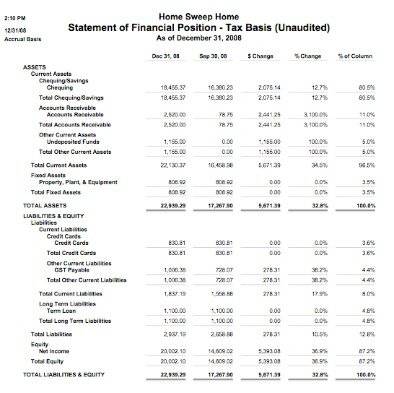Content

Sal records a credit entry to his Loans Payable account for $3,000 and debits his Cash account for the same amount. Sal’s Surfboards sells 3 surfboards to a customer for $1,000. Sal deposits the money directly into his company’s business account.

Debits and credits are not used in a single entry system. In this system, only a single notation is made of a transaction; it is usually an entry in a check book or cash journal, indicating the receipt or expenditure of cash. A single entry system is only designed to produce an income statement. A single entry system must be converted into a double entry system in order to produce a balance sheet. Business transactions are events that have a monetary impact on the financial statements of an organization. When accounting for these transactions, we record numbers in two accounts, where the debit column is on the left and the credit column is on the right.
Debits and Credits Example: Fixed Asset Purchase
To record the increase in your books, credit your Accounts Payable account $15,000. Liability accounts record debts or future obligations a business or entity owes to others. When one institution borrows from another for a period of time, the ledger of the borrowing institution categorises the argument under liability accounts. The Profit and Loss Statement is an expansion of the Retained Earnings Account. It breaks-out all the Income and expense accounts that were summarized in Retained Earnings.
- When your business does anything—buy furniture, take out a loan, spend money on research and development—the amount of money in the buckets changes.
- Here are a few examples of common journal entries made during the course of business.
- Debits and credits are not used in a single entry system.
- Pacioli is now known as the “Father of Accounting” because the approach he devised became the basis for modern-day accounting.
- Monalo’s balance sheet would include an obligation (“liability”) to Matthew for the amount of money on deposit.
- Debits and credits are a critical part of double-entry bookkeeping.
Credit accounts include liabilities, equity, and revenue. All accounts that usually have a credit balance will increase when credit is added and decrease when a debit is added. Most modern accounting software won’t even let you submit the entry if the debits and credits don’t balance. Debits and credits are accounting entries that record business transactions in two or more accounts using the double-entry accounting system. In this journal entry, cash is increased and accounts receivable credited . The first problem is figuring out which account would have a debit entry and a credit entry.
Debits and Credits In Action
Finally, some transactions are a mixture of increase/decrease effects; using cash to buy land causes cash to decrease and land to increase (a “-/+” outcome). In the previous chapter, the “+/-” nomenclature was used for the various illustrations. Take time to review the comprehensive illustration that was provided in Chapter 1, and notice that various combinations of pluses and minuses were needed. All accounts that usually have a credit balance will increase when a credit (right-hand side) is added, and decrease when a debit (left-hand side) is added. Credit accounts include liabilities, equity and revenue.
- However, most businesses use a double-entry system for accounting.
- Understanding accounting basics is critical for any business owner.
- So the same money is flowing but is accounting for two items.
- So, the five types of accounts are used to record business transactions.
Both of these financial statements are governed by the double-entry principle, however. Debits and Credits are simply accounting terminologies that can be traced back hundreds of years, which are still used in today’s double-entry accounting system. When most people hear the term debits and credits, they think of debit cards and credit cards.
Credit and debit accounts
In accounting, all transactions are recorded in a company’s accounts. The basic system for entering transactions is called debits and credits. This seems hard but it is a simple system that you can learn. In the second part of the transaction, you’ll want to credit your accounts receivable account because your customer paid their bill, an action that reduces the accounts receivable balance. Again, according to the chart below, when we want to decrease an asset account balance, we use a credit, which is why this transaction shows a credit of $250. Debits are money going out of the account; they increase the balance of dividends, expenses, assets and losses.
In many instances, business owners are responsible for resolving their accounts payable — another word for short-term liabilities — or an amount they owe to a supplier or vendor. The below example illustrates a financial transaction in which a catering company provided its services for a client’s party. In this case, the client didn’t immediately pay in full; rather, they asked to be billed. For this reason, the asset must be documented as a receivable account and not cash. The revenue account is increasing, as is the assets account. A chart of accounts, or COA, provides a bird’s-eye view of a business’s financial data.
Transaction Analysis
All accounts, collectively, are said to comprise a firm’s general ledger. In a manual processing system, imagine the general ledger as nothing more than a notebook, with a separate page for every account. Thus, one could thumb through the notebook to see the “ins” and “outs” of every account, as well as existing balances. The following example reveals that cash has a balance of $63,000 as of January 12. By examining the account, one can see the various transactions that caused increases and decreases to the $50,000 beginning- of-month cash balance.

These withdrawals are recorded as debits, because they decrease equity. Since debits increase the balance on your accounting for a bank account and credits lower the balance, other assets work the same way. Debits increase the ledger balance for an asset and credits reduce it. Buy a new computer and you debit the asset account for equipment. The check you write to the computer store is an equal amount of credit to the bank account ledger on your books.
The invoice is the source document evidencing the completed work for which payment is now due. Therefore, Debits And Credits Explaineds Receivable is to be increased and Revenues must be increased . When her client pays, the resulting bank deposit receipt will provide evidence for an entry to debit Cash and credit Accounts Receivable . There are no exceptions to this rule, even though some accounts may seem to have strange rules at first.
Martin Lewis fan earns extra £7,000 after following simple advice – My London
Martin Lewis fan earns extra £7,000 after following simple advice.
Posted: Wed, 15 Feb 2023 08:00:00 GMT [source]
